http://www.rhci-online.net/radiogram/radiogram.htm
|
RSID: <<2018-12- 25T01:24Z MFSK-32 @ 7780000+1500>>RSID: <<2019-01-01T01:24Z MFSK-32 @ 7780000+1500>> [ripetizione]
START
IBC - ITALIAN BROADCASTING CORPORATION
mail:
ibc@europe.com
|
|
http://www.rhci-online.net/radiogram/radiogram.htm
|
RSID: <<2018-12- 25T01:24Z MFSK-32 @ 7780000+1500>>RSID: <<2019-01-01T01:24Z MFSK-32 @ 7780000+1500>> [ripetizione]
START
IBC - ITALIAN BROADCASTING CORPORATION
mail:
ibc@europe.com
|
|
|
RSID: <<2018-12- 29T13:30Z MFSK-64 @ 11600000+1500>>
|
|
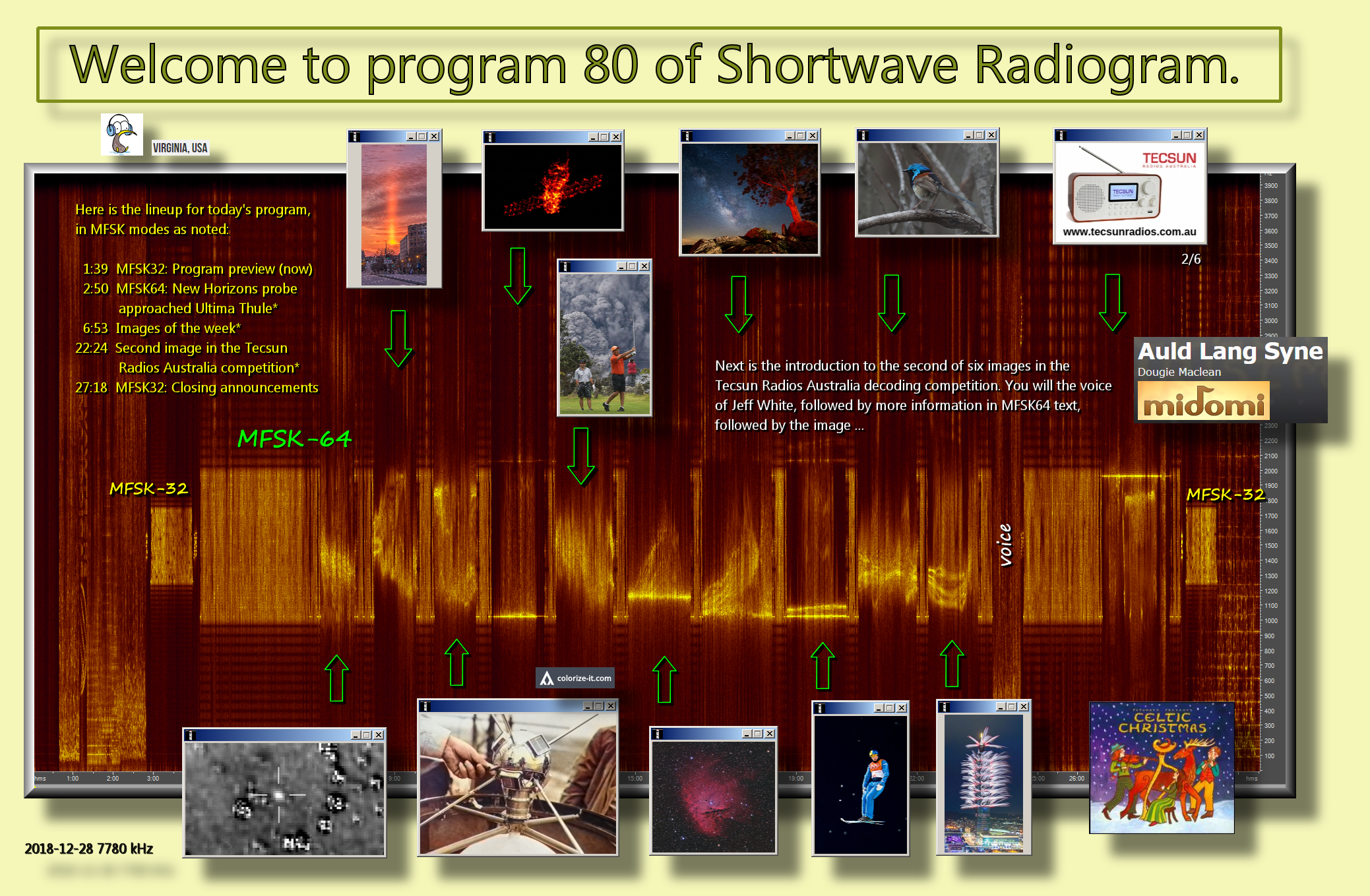
RSID: <<2018-12-29T14:01Z MFSK-32 @ 9400000+1500>>
Welcome to program 80 of Shortwave Radiogram.
I'm Kim Andrew Elliott in Arlington, Virginia USA
Here is the lineup for today's program, in MFSK modes as noted:
1:39 MFSK32: Program preview (now)
2:50 MFSK64: New Horizons probe approached Ultima Thule*
6:53 Images of the week*
22:24 Second image in the Tecsun Radios Australia competition*
27:18 MFSK32: Closing announcements
* with image(s)
Please send reception reports to
radiogram@verizon.net
And visit http://swradiogram.net
Twitter:
@SWRadiogram
Shortwave Radiogram now changes to MFSK64 ...
RSID: <<2018-12-29T14:02Z
MFSK-64 @
9400000+1500>>
This is Shortwave Radiogram in MFSK64 ...
From New Atlas:
NASA's New Horizons probe seems to be approaching a surprisingly
"dark" world
Michael Irving
26 December 2018
NASA's New Horizons probe is just days away from its historic
flyby of Ultima Thule, a mysterious object on the fringe of the
solar system. Since it awoke from hibernation back in June, the
craft has been making observations of the object, and that has
raised the first puzzle – Ultima seems to be an unexpectedly
"dark" world, and while there are a number of possible
explanations, none of them have any precedent in the solar
system.
One of the main techniques astronomers use to figure out the
shape of small objects, like asteroids and minor planets, is to
observe their light curve. Basically, that means watching how the
sunlight reflecting off the object's surface changes over time,
which can reveal how fast it's spinning and what shape it may be.
A perfectly round object, for example, would have a relatively
flat light curve, since the same amount of light bounces off it
from every side, while the cigar-shaped asteroid 'Oumuamua has a
much more variable light curve.
But Ultima Thule has completely defied expectations. Previous
observations have indicated that the object should be a fairly
irregular shape, and may even be two separate objects orbiting
each other very closely. That means it should have a pretty
erratic light curve, but so far that hasn't been the case. And
it's not that Ultima has turned out to be surprisingly round
either – the New Horizons team so far has not detected any light
curve at all.
"It's really a puzzle," says Alan Stern, New Horizons Principal
Investigator. "I call this Ultima's first puzzle – why does it
have such a tiny light curve that we can't even detect it? I
expect the detailed flyby images coming soon to give us many more
mysteries, but I did not expect this, and so soon."
The researchers have a few possible explanations in mind, but
none of them are particularly likely. For one, New Horizons might
be approaching Ultima from exactly in-line with its rotation
pole, which is possible but requires quite a coincidence. A
second theory suggests that Ultima is shrouded in a thick cloud
of dust, similar to the coma of a comet. The problem there is
that this only forms when comets pass close to the Sun and the
heat begins to vaporize material. Ultima is much too far from the
Sun for that, so unless another heat source is at work, that
doesn't seem likely.
"An even more bizarre scenario is one in which Ultima is
surrounded by many tiny tumbling moons," says Anne Verbiscer, an
assistant project scientist on New Horizons. "If each moon has
its own light curve, then together they could create a jumbled
superposition of light curves that make it look to New Horizons
like Ultima has a small light curve."
Again, while that's technically possible it would make Ultima
Thule unlike any other body in the solar system. Plus, these
moons would have to be very tiny and very close to the surface –
last week NASA gave the probe the green light to approach the
object on its optimal path after months of observations found no
sign of any potentially hazardous moons or debris.
Whatever the answer is, we don't have long to wait. New Horizons
is due to buzz Ultima Thule on New Year's Day 2019 – next
Tuesday. High-resolution images will be streamed back to Earth
over the few days following that, giving us an up-close look at
the most distant object ever visited by a spacecraft.
https://newatlas.com/new-horizons-ultima-thule-light-curve/57798/
Image: Kuiper Belt object Ultima Thule as seen by New Horizons on
August 16, 2018. The forms around it are bright background stars.
From
bit.ly/2SnRevH ...
Sending Pic:301x170;
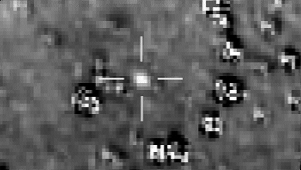
This is Shortwave Radiogram in MFSK64
Please send your reception report to
radiogram@verizon.net
This week's images ...
This sun pillar, caused by falling ice crystals, at sunrise on
Christmas morning seen from Massachusetts Avenue NW in Washington
DC. From
bit.ly/2AhwgI6 ...
Sending Pic:99x214C;

From the RFE/RL pictorial "Lost In Space: The Weird & Wonderful,
Cold War-Era Satellites Still Circling Earth": Vanguard was the
first satellite to use solar power and transmitted faint radio
signals back to Earth for six years before sputtering into
silence. It is now humankind's oldest object in space.
bit.ly/2Qo7eju ...
Sending Pic:297x212;
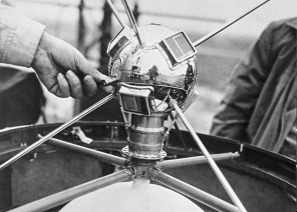
One of Aviation Week's photos looking back at space flight in
2018 is China’s first prototype space station, Tiangong-1,
reentering Earth’s atmosphere on April 2. The module was launched
into orbit on Sept. 29, 2011. From
bit.ly/2rW23tv ...
Sending Pic:207x127C;
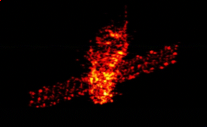
One of The Guardian's best photos of 2018, golfers ignoring a
volcano in Hawaii. From
bit.ly/2CzPQR5 ...
Sending Pic:136x212C;
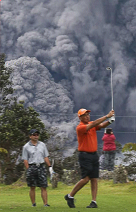
From space.com's best photos of 2018, the Pacman Nebula, also
known as NGC 281. It is located about 9,500 light-years away from
Earth and looks almost as big as the full moon in the night sky.
bit.ly/2ERUMTg ...
Sending Pic:186x168C;
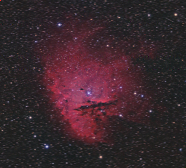
The Washington Post's year in photos includes this shot of the
Milky Way from Shenandoah National Park in Virginia. From
wapo.st/2QBSlu8 ...
Sending Pic:206x167C;
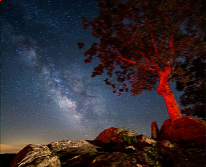
One of Time Magazine's top photos of 2018 is Oleksandr Abramenko,
who won gold in the freestyle men's aerials finals at the 2018
Winter Olympics. He is the first Ukrainian man to ever win a gold
medal in the Winter Games. From time.com/2018-photos/ ...
Sending Pic:140x209C;
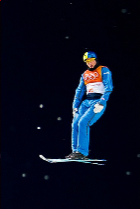
The subject of a winner of the 2018 Audubon Photography Awards is
this variegated fairywren in New South Wales, Australia. From
bit.ly/2LenjTn ...
Sending Pic:210x139C;
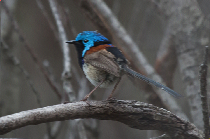
One of the most spectacular New Year's Eve celebrations will be
at the Taipei 101 skyscraper in Taiwan. See
bit.ly/2QR3msp ...
Sending Pic:119x209C;
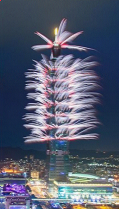
This is Shortwave Radiogram in MFSK64
Please send your reception report to
radiogram@verizon.net
Next is the introduction to the second of six images in the
Tecsun Radios Australia decoding competition. You will the voice
of Jeff White, followed by more information in MFSK64 text,
followed by the image ...
RSID: <<2018-12-29T14:23Z MFSK-64 @ 9400000+1500>>
Finally, a stand-alone Digital Radio Mondiale (DRM) Shortwave
Radio has arrived and is available for DRM and shortwave radio
enthusiasts to add to their collection.
The Tecsun Radios Australia Q-3061 DRM Shortwave Radio is the
culmination of several years work. Tecsun Radios Australia has
worked in close co-operation with the manufacturer providing
testing results from locations across the Pacific, including
Samoa, Vanuatu, Solomon Islands, Fiji, and New Zealand. Reception
of DRM signals in Australia requires many factors to be
optimised, because we are outside the traditional coverage area
of most broadcasters. Nevertheless, with an optimised antenna,
correct selection of DRM broadcaster, schedule and good
propagation conditions DRM signals can be received.
The Tecsun Radios Australia Q-3061 DRM Shortwave Radio is
primarily designed to receive and decode DRM Shortwave Radio
signals but the radio can also be used to receive traditional
Shortwave (AM) broadcasts, FM, and AM (MW) broadcasts. The Tecsun
Radios Australia Q-3061 DRM Shortwave Radio receives DRM, FM, and
Shortwave (AW) signals via the inbuilt telescopic antenna, or for
superior reception, the radio provides two dedicated external
antenna BNC connections for DRM, Shortwave (AM), FM, and AM (MW)
signals. On the FM band this receiver also decodes RDS where
broadcast. In slow tuning mode, the frequency step is reduced to
1 kHz. This is an advantage when tuning the extended MW band
(530-1710 kHz) to receive specialised broadcasters in Australia.
New DRM broadcasters are appearing every month. Heard every day
are: RNZI (6115,9760 or 11690 Khz), Radio Kuwait (11970 kHz) and
the BBC Far Eastern Relay station in Singapore (15620 kHz). In
addition Radio China has been heard on 17800, 15580, 11695, and
6030 kHz. As the summer months roll on, expect propagation
conditions to improve.
Find out more and order your Tecsun Radios Australia Q-3061 DRM
Shortwave Radio now at
www.tecsunradios.com.au
And remember, over the next 5 weeks Tecsun Radios Australia are
running a fantastic competition to win a Tecsun PL880 Radio prize
pack worth over $250 Australian Dollars.
Decode and share all 6 Tecsun Radios images on Twitter
@TecsunRadios and send them an email
hello@tecsunradios.com.au.
The winner will be judged by Garry on 1 February 2019. They’ll
even ship the prize pack anywhere in the world!
Sending Pic:225x150C;
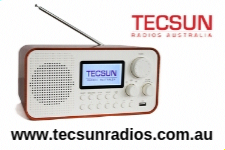
TECSUN RADIOS AUSTRALIA
www.tecsunradios.com.au
Shortwave Radiogram now returns to MFSK32 ...
RSID: <<2018-12-29T14:27Z
MFSK-32 @
9400000+1500>>
This is Shortwave Radiogram in MFSK32 ...
Transmission of Shortwave Radiogram is provided by:
WRMI, Radio Miami International, http://wrmi.net
and
Space Line, Bulgaria, http://spaceline.bg
Please send reception reports to
radiogram@verizon.net
And visit http://swradiogram.net
Twitter:
@SWRadiogram
I'm Kim Elliott.
Happy New Year!
And please join us for the next Shortwave Radiogram.
|
Ending song SWRG: https://www.midomi.com/index.php?action=main.track&track_id=100859504804015159&from=voice_search Dougie Maclean - Auld Lang Syne https://www.youtube.com/watch?v=sMFnqj6aFwY
|
http://www.rhci-online.net/radiogram/radiogram.htm
|
QTH: |
D-06193 Petersberg (Germany/Germania) |
|
|
Ant.: |
Dipol for 40m-Band & Boomerang Antenna 11m-Band |
|
|
RX for RF: |
FRG-100B + IF-mixer & ICOM IC-R75 + IF-mixer |
|
|
Software IF: |
con STUDIO1 - Software italiano per SDR [S-AM-USB/LSB] + beta 11 Version 2.80 (August 21, 2018) - for scheduled IF-recording |
|
|
Software AF: |
Fldigi-4.0.18 + flmsg-4.0.7 images-fldigifiles on homedrive.lnk |
|
|
OS: |
German XP-SP3 with support for asian languages |
German W7 32bit + 64bit |
|
PC: |
MEDION Titanium 8008 (since 2003) [ P4 - 2,6 GHz] |
MSI-CR70-2MP345W7 (since2014) [i5 -P3560 ( 2 x 2,6GHz) ] |
RSID: <<2018-12-29T13:03Z
MFSK-32 @
6070000+1500>>
RSID: <<2018-12-29T13:03Z
MFSK-32 @
6070000+1500>>
Slow Scan Radio December 29th, 2018, Episode 20
Last show of the year!!
Good afternoon to everyone listening.
Today we will have 9 or 10 SSTV images PLUS two DRM images (not DMR :-) )
You can receive the DRM images (which start right after the new years wish)
using QSSTV when using Linux, and EasyPal with Windows. Other programs for DRM,
for example WinDRM will probably also work.
You can receive the DRM images (which start right after the new years wish)
using QSSTV when using Linux, and EasyPal with Windows. Other programs for DRM,
for example WinDRM will probably also work.
This info will be in MFSK32 and DominoEX22
In the last minutes of the show there will be an explanation and copyright info
of the images in DominoEX44.
Info on the show:
Mail: x@xdv.me
Web: www.slowscanradio.com
Mastodon: @PA0ETE@wokka.be
Twitter: SlowScanRadio
Slow Scan Radio is sponsored by
70MHzshop.nl
de k
RSID: <<2018-12-29T13:04Z
DominoEX 22 @
6070000+1500>>
RSID: <<2018-12-29T13:04Z
DominoEX 22 @
6070000+1500>>
Radio December 29th, 2018, Episode 20
Last show of the year!!
Good afternoon to everyone listening.
Today we will have 9 or 10 SSTV images PLUS two DRM images (not DMR :-) )
You can receive the DRM images (which start right after the new years wish)
using QSSTV when using Linux, and EasyPal with Windows. Other programs for DRM,
for example WinDRM will probably also work.
You can receive the DRM images (which start right after the new years wish)
using QSSTV when using Linux, and EasyPal with Windows. Other programs for DRM,
for example WinDRM will probably also work.
This info will be in MFSK32 and DominoEX22
In the last minutes of the show there will be an explanation and copyright info
of the images in DominoEX44.
Info on the show:
Mail: x@xdv.me
Web: www.slowscanradio.com
Mastodon: @PA0ETE@wokka.be
Twitter: SlowScanRadio
Slow Scan Radio is sponsored by
70MHzshop.nl
de k
RSID: <<2018-12-29T13:27Z
DominoEX 44 @
6070000+1500>>
RSID: <<2018-12-29T13:27Z
DominoEX 44 @
6070000+1500>>
Images and copyright info this week:
1.
Knock John naval Maunsell fort
Author: Hywel Williams
This file is licensed under the Creative Commons Attribution-Share Alike 2.0
Generic license.
2.
Knock John naval Maunsell fort
Author: Hywel Williams
This file is licensed under the Creative Commons Attribution-Share Alike 2.0
Generic license.
3.
Royal Navy Maunsell fort during the Second World War
Public domain
4.
Alexanderson alternator an antique type of radio transmitter, placed in the main
building of the Varberg radio station in Grimeton near Varberg, Sweden. This was
a specialized
AC electric generator which turned at an extremely high rate, generating radio
waves. They were used between 1906 and the mid 1920s in very low frequency (VLF)
radio stations, mostly
operated by governments and navies, to broadcast long distances. They were very
expensive, inefficient, and finicky to adjust, and were mostly replaced by
vacuum tube transmitters by
the 1930s.
Author: Dagjoh
This file is licensed under the Creative Commons Attribution 3.0 Unported
license.
5.
Grimetons radiostation
This file is licensed under the Creative Commons Attribution 2.5 Generic
(Reusing this file) license.
Attribution: Bengt A Lundberg / Riksantikvarieämbetet
6.
Radio Kootwijk
Author: Talulabelle8
This file is licensed under the Creative Commons Attribution-Share Alike 4.0
International license.
7.
Pole dancer with body painting
Author: Raul Lanus
This file is licensed under the Creative Commons Attribution-Share Alike 4.0
International license.
8.
Morse key
Author: Daderot
This file is made available under the Creative Commons CC0 1.0 Universal Public
Domain Dedication.
9.
Morse keys
Own work
10. Amroh solid state radio kit (early 1960s)
Own work
11. (DRM)
Radio Kootwijk building "the
Cathedral" in the Netherlands.
Author: Bert K.
This file is licensed under the Creative Commons Attribution 2.0 Generic
license.
12. (DRM)
Peblinge Sø with Søpavillonen in Copenhagen, Denmark
Dietmar Rabich / Wikimedia Commons / “Kopenhagen (DK), Peblinge-See,
Søpavillonen -- 2017 -- 1453” / CC BY-SA 4.0
de k
RSID: <<2018-12-29T13:28Z 20xPSK63R @ 6070000+1500>>
RSID: <<2018-12-29T13:28Z
20xPSK63R @
6070000+1500>>
1.
Knock John naval Maunsell fort
Author: Hywel Williams
This file is licensed under the Creative Commons Attribution-Share Alike 2.0
Generic license.
2.
Knock John naval Maunsell fort
Author: Hywel Williams
This file is licensed under the Creative Commons Attribution-Share Alike 2.0
Generic license.
3.
Royal Navy Maunsell fort during the Second World War
Public domain
4.
Alexanderson alternator an antique type of radio transmitter, placed in the main
building of the Varberg radio station in Grimeton near Varberg, Sweden. This was
a specialized
AC electric generator which turned at an extremely high rate, generating radio
waves. They were used between 1906 and the mid 1920s in very low frequency (VLF)
radio stations, mostly
operated by governments and navies, to broadcast long distances. They were very
expensive, inefficient, and finicky to adjust, and were mostly replaced by
vacuum tube transmitters by
the 1930s.
Author: Dagjoh
This file is licensed under the Creative Commons Attribution 3.0 Unported
license.
5.
Grimetons radiostation
This file is licensed under the Creative Commons Attribution 2.5 Generic
(Reusing this file) license.
Attribution: Bengt A Lundberg / Riksantikvarieämbetet
6.
Radio Kootwijk
Author: Talulabelle8
This file is licensed under the Creative Commons Attribution-Share Alike 4.0
International license.
|
|
Radio KootwijkRadio Kootwijk wurde zwischen 1918 und 1923 auf einem verlassenen Gelände in der Veluwe eingerichtet, etwa 12 km von Apeldoorn entfernt. Die Sendestation sorgte für den ersten direkten Radiokontakt mit Niederländisch-Indien. Das Hauptgebäude gehört zu den schönsten Beispielen für Art déco in den Niederlanden und wurde zu Recht zum „Rijksmonument“ erklärt, also unter besonderen Denkmalschutz gestellt.......... https://spannendegeschichte.com/industrieel-erfgoed/radio-kootwijk-radio-kootwijk Radio Kootwijk sendete im Langwellenbereich, was allerdings nur mit schweren Geräten und Hunderten Kilowatt Strom funktionierte. Schon wenige Jahre nach dem Bau stellte sich jedoch heraus, dass Radiokontakt auch über Kurzwelle und mit weniger schweren Apparaturen möglich war. Faktisch war der Sender damals veraltet und man stellte auf Kurzwelle um. Erst 2000 wurden die letzten Sendefunktionen stillgelegt......
|
7.
Pole dancer with body painting
Author: Raul Lanus
This file is licensed under the Creative Commons Attribution-Share Alike 4.0
International license.
8.
Morse key
Author: Daderot
This file is made available under the Creative Commons CC0 1.0 Universal Public
Domain Dedication.
9.
Morse keys
Own work
|
|
|
10. Amroh solid state radio kit (early 1960s)
Own work
|
|
|
.jpg)
11. (DRM)
Radio Kootwijk building "the
Cathedral" in the Netherlands.
Author: Bert K.
This file is licensed under the Creative Commons Attribution 2.0 Generic
license.
12. (DRM)
Peblinge Sø with Søpavillonen in Copenhagen, Denmark
Dietmar Rabich / Wikimedia Commons / “Kopenhagen (DK), Peblinge-See,
Søpavillonen -- 2017 -- 1453” / CC BY-SA 4.0
53 kb *.jp2 ===> 393 kb *.png
de k
RSID: <<2018-12-29T13:29Z Feld Hell @ 6070000+1500>>
RSID: <<2018-12-29T13:29Z Feld Hell @ 6070000+1500>>

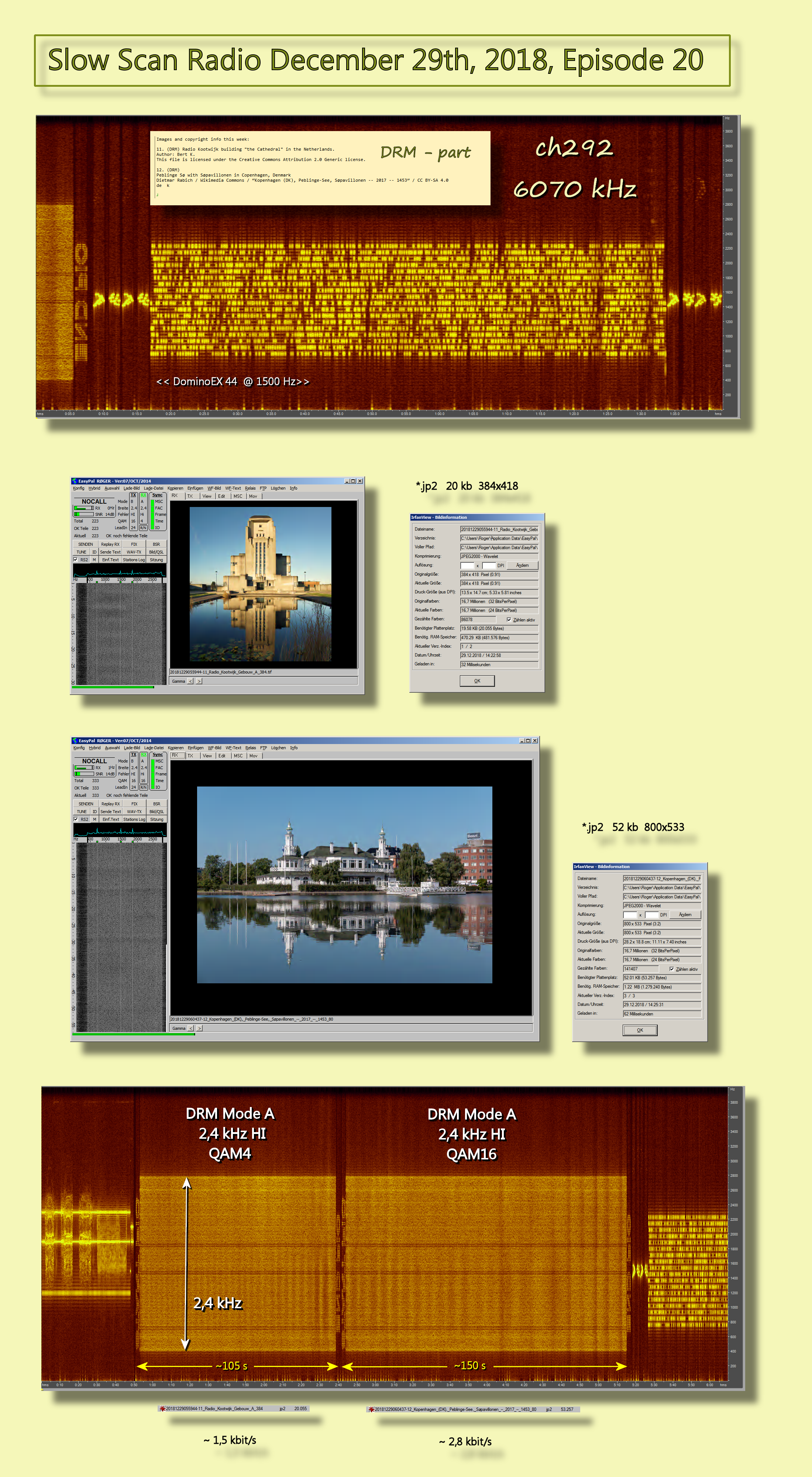
The data contained audio is free of viruses
(according to Malwarebytes). I do not write that as a joke, that would be
technically possible.
Both images are compressed in JPEG2000.
The first image was transferred with an incorrect TIF extension instead of *
.jp2. For the second file, the file name was too long anyway.
Here you have to manually add * .jp2 to the name in the target directory.
https://rtvforum.net/rx-sstv-i-easypal-t1590-s40.html
http://shrani.si/f/27/Fd/1tFxDqsu/ssr-easypal.jpg

http://shrani.si/f/1y/kp/4zV0WfOW/easypal-napaka-pri-preno.jpg (EASYPAL Fehler in der Übertragung [Kroatisch] )

https://twitter.com/F4ECA/status/1079087058239537153
